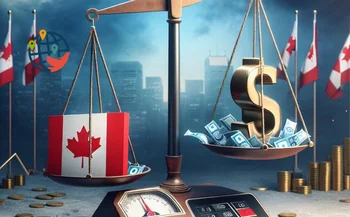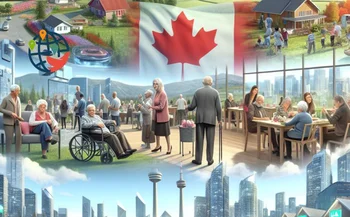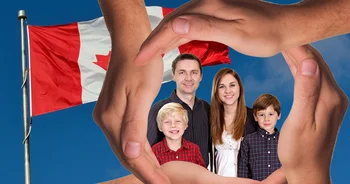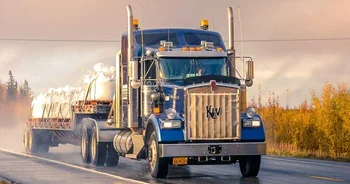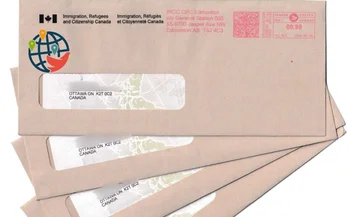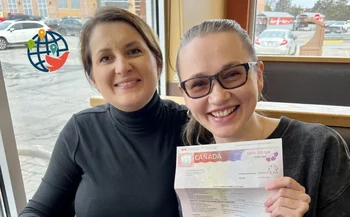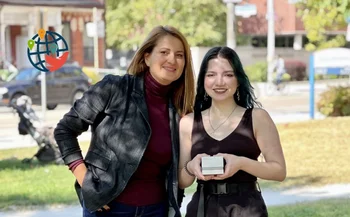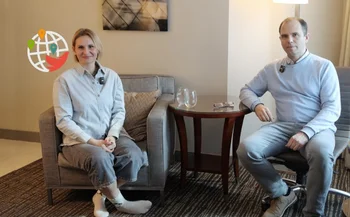Education system in Canada

Canada has many public and private kindergartens and schools that are open to everyone, regardless of citizenship. However, Canadian education is not always free.
Preschool education in Canada
Early childhood education in Canada refers to any learning that begins before a child enters grade one, that is, until the age of 4 or 5, depending on the province and territory.
Generally, young children can attend educational institutions such as nursery school, daycare or childcare programs. This education is not compulsory, and private preschools require additional costs for parents.
There are also kindergartens. These institutions usually prepare your child for school for one year. In many provinces, attendance at kindergartens is compulsory in Canada's education system. In most provinces and territories, children can be enrolled in kindergarten when they turn 4 or 5 years old.
Children can attend preschool organizations at local elementary schools as a preparatory step to starting elementary school. The preschool education program in Canada provides a comfortable environment where young learners learn the alphabet, counting and reading, are introduced to music and art, and learn to socialize and play with other children. These programs are designed to prepare children for the next stage of learning, elementary school.
Kindergarten-type preschool programs are available in public, private, or federal schools, depending on your choice for your child. In most Canadian provinces and territories, the first year of preschool is free in public schools, and some provinces also offer additional years free of charge. For example, in Quebec, free preschool education is available for children from low-income families or for children with special needs.
How to enroll in kindergarten
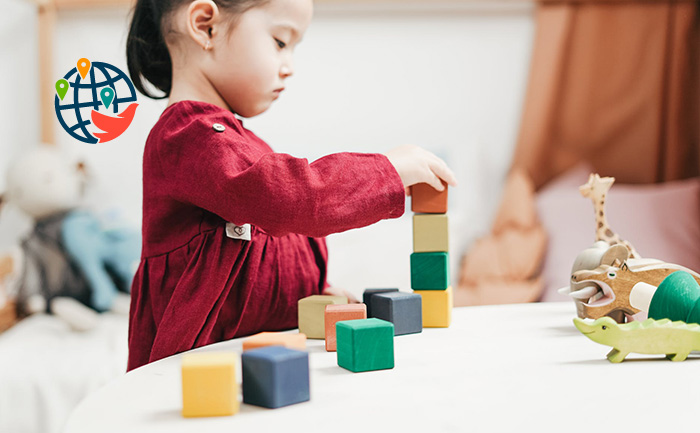
In Canada, public school education is free for immigrant children, including permanent residents, work permit holders, and study permit holders.
Permanent residents of Canada do not need to provide additional documentation to get free public school education for their child. Public school education in Canada is free for all children of Canadian citizens and permanent residents from kindergarten through high school. This comes from taxes paid by all residents of the country.
However, temporary residents, such as work and study permit holders, may need to provide certain documents to prove their child's eligibility for free public schooling. Requirements may vary from province to province or territory to territory.
To enroll your child in a Canadian daycare center, you need to provide the following documents:
- the child's birth certificate;
- Immigration documents or proof of Canadian citizenship (yours and the child's);
- the child's immunization record;
- proof of residential address (purchase or rental agreement, property tax receipt for the current year, or rent receipt for the current month).
Prescool education cost
On average, in Canada, the cost of a full day of preschool is $544 CAD per month. However, the cost can vary greatly from province to province and territory to territory.
Quebec cities have the lowest monthly child care rates in the country, at $192 CAD for infants and toddlers. Richmond, British Columbia, and Toronto have the most expensive child care for children under 18 months of age, costing an average of over $900 CAD per month.
Richmond also has the highest child care rates for children ages one and a half to three, averaging $905 CAD per month, followed by Calgary at $808 CAD per month and Toronto at $725 CAD per month.
For older preschool children, ages 2.5 to 5, Calgary is the most expensive city with a rate of $810 CAD per month, followed by Richmond at $800 CAD per month and Oakville, Ontario, Vaughan, Ontario, Toronto, Burnaby, and Sarrey at $600 CAD per month.
At the same time, the Canadian government is developing special programs to make child care affordable for everyone in the country. Canada's goal is to arrive at a cost of $10 CAD per day for child care facilities.
Classes and schedule
Children in Canadian kindergartens are prepared for elementary school. They learn basic skills related to literacy, numeracy, socialization, and creativity:
- elementary literacy and numeracy: children learn to write, learn the basics of math, and learn to think critically;
- formation of civic position and identity: each child develops as a citizen by fostering a sense of personal connection to the class and school;
- familiarization with the environment and society: children learn to perceive themselves as part of society and nature;
- formation of personal and social responsibility: children learn to think for themselves, assess the consequences of their actions, understand their own feelings and those of others, and respect the differences in others;
- building physical skills: children play and develop motor skills;
- creative expression and creative thinking.
Main activities include reading, math, and writing lessons, as well as learning and developmental games. Children also spend time outdoors and relaxing.
Full-day kindergarten may open at 7:30 am and close at 6:00 pm. Kindergartens are open Monday through Friday, September through June. There are also summer camps for children that are available in July and August.
Elementary and secondary schools in Canada

The next stages of education after preschool institutions are primary and secondary school.
Canada has a mandatory Child Education Act, and parents must make sure that their children are enrolled in school and attend classes regularly. Depending on where you live, there are a variety of educational options from which to choose. Each province and territory has its own education system with some specifics that reflect the priorities of the respective regional government. There is no national or federal education system in Canada; each region manages its own educational process.
Parents can choose the educational organization system for their child according to their preferences:
- public schools are free, publicly funded organizations;
- private schools are fee-paying for-profit organizations that do not receive government funding. Some of them offer religious education and may be day schools or boarding schools, schools for both sexes or only for boys or only for girls;
- homeschooling is legal throughout Canada. However, the requirements for homeschooling vary greatly. To begin homeschooling your child, you need to familiarize yourself with the requirements of your province or territory. Laws, regulations, and policies should be checked regularly as they can change.
- English or French schools: Education is available in English or French throughout the country, even in areas where one language is spoken more than the other. In Quebec, immigrant children are usually required to attend public schools in French, but there are private schools that teach in English.
Stages of schooling
It takes 12 years for children to complete school education in Canada (11 in Quebec). There are two main levels of schooling: primary / elementary school and secondary / high school. In some provinces, these two main categories may be divided into subcategories:
- An elementary (primary) school usually includes grades 1 to 6 (or 1 to 3 if there is a middle school). In most provinces and territories, it also includes kindergarten. In Ontario, this stage includes 2 years of kindergarten — Junior Kindergarten (JK) and Senior Kindergarten (SK).
- Most provinces have a junior high school. It usually includes grades 6-7 to 8-9 (for children aged 12-15), but in Ontario it is usually only grades 7 and 8.
- High school (secondary school or high school) usually includes grades 9-10 to 11-12. This stage ends in grade 12 in all provinces except Quebec, where, after grade 11, students enter the CEGEP (Collège d'enseignement général et professionnel) vocational education and training program.
In most provinces and territories, children must start school in the year they turn 6 or 7 as of December 31 and attend until they turn 16 or 18. The age range may vary by province or territory:
- Alberta, British Columbia, Newfoundland and Labrador, Quebec, Yukon: 6 to 16 years of age
- New Brunswick, Northwest Territories: 5 to 18 years of age
- Nova Scotia, Prince Edward Island: 5 to 16 years of age
- Manitoba: 7 to 18 years of age
- Ontario: 6 to 18 years old
- Saskatchewan: 7 to 16 years old
How to enroll your child in school
Urban areas in Canada are divided into school districts. Children go to free public schools where they live. You can find out which school district you belong to by zip code.
To enroll your child in elementary or secondary school, contact your local school board — it is recommended that you do this before the school year begins. However, if you arrive in Canada in the middle of the school year, you should not wait until the new year, but contact your local school board right away to find a place for your child.
To apply for admission to the school, you must have:
- completed questionnaires;
- the child's birth certificate;
- Immigration documents or proof of Canadian citizenship for parents and child;
- child's medical card and immunization passport;
- proof of residential address (purchase or lease agreement, property tax receipt for the current year or rent payment receipt for the current month);
- a document with grades from the country of arrival or from a previous Canadian school. A child must have completed certain levels of schooling that correspond to Canadian schooling (if you immigrated from another country) and must also be proficient in English or French;
- non-refundable registration fee (for private schools);
- test scores (depending on the school, your child may need to take an entrance exam).
In some cases, international students may need a study permit to study in Canada. For example, children whose parents are in Canada as temporary residents with a work and study permit for themselves, or children coming to Canada to study unaccompanied.
By law, all elementary and secondary schools in Canada can accept international students.
School fees

Public schools in Canada are free. But there may be fees for school supplies and extra activities. Public schools may charge parents for the following:
- school supplies (pencils, pens, markers, pencil cases, paper, notebooks, folders, scissors, glue, sports clothes);
- additional courses and programs (drama class, photography class, web design courses, etc.);
- extracurricular activities, excursions;
- school clothes;
- school pictures;
- musical instrument rental.
In addition, many public schools may charge fees for non-resident international students. Fees can range from $9,500 CAD to $17,000 CAD.
Private schools in Canada charge fees, and this applies to both international and domestic students. Private school fees can range from $15,000 CAD to $30,000 CAD, and boarding type private schools are more expensive, ranging from $63,000 CAD to $83,000 CAD.
Some of the most expensive private schools include Brentwood College School (British Columbia), Shawnigan Lake School (British Columbia), Appleby College (Ontario), Albert College (Ontario), and Trinity College School (Ontario).
Classes and schedule
In Canada, the school year usually starts at the end of August or early September and ends at the end of June, after which children go on summer vacation for two months. There is also Christmas vacation (at the end of December) and Easter vacation (in April). The school year is divided into quarters or semesters.
Schools are open Monday through Friday. Elementary schools usually run from 8:30 a.m. to 3 p.m. or 3:30 p.m. with an hour-long lunch break. There are also two 15-minute breaks. In secondary schools, the school day usually runs from 8:30 a.m. to 2:30 p.m. Extracurricular activities and sports take place after school hours.
Canadian schools may have programs in English and French (depending on the province or territory). School subjects include arts, business education, vocational and technical education, information technology, English, French, health science, math, physical education, science, social studies, and many others, depending on the school.
Around grade 9, students receive career guidance counseling and choose subjects that will be useful for their chosen profession. Larger schools may offer specialized education, such as academic (study of science, higher mathematics, languages at an advanced level), vocational (education in agriculture, business, economics, medicine) or general education.
High school students receive a high school diploma that allows them to enter a Canadian university.
Higher education

A high school diploma is required to enter a Canadian college or university. In Quebec, you must complete a 2-year college preparatory program to earn a DCS diploma or a 3-year technical training program (DCS Technical diploma) before you can go to university.
Sometimes you may be required to take the Scholastic Aptitude Test (SAT), a test of your high school curriculum knowledge (for example, when applying to McGill or the University of Toronto). If the applicant has completed a Pathway preparation program at a language school, this test may not be required. There are exams (auditions) for acting and music majors. For design-related majors, a creative portfolio may be required. In general, the requirements may vary depending on the particular university and specialty.
Read more about Canadian universities in the article "Immigrating to Canada through Education. Study in Canada.
Additionally, you can learn about opportunities to enroll your child in a secondary education program at Longbridge Academy, as well as about Pathway to University Program at ILAC Canadian Language Academy.




